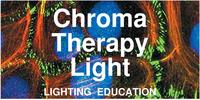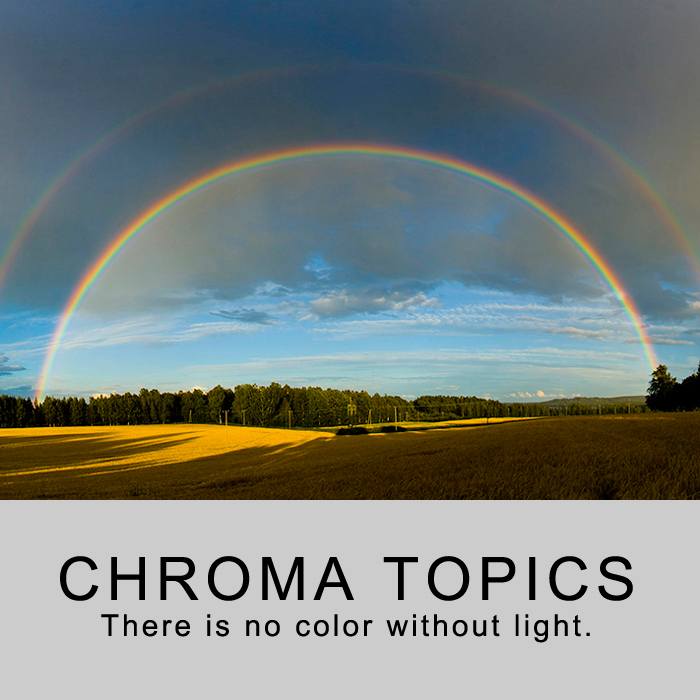TAB key is used for keyboard navigation.
|
Photos for ChromaTherapyLight
Picture Size and Background Color
Photo size
Photo description is the Alt Text
Web Accessibility - Developing with Empathy
TAB key is used for keyboard navigation.
For WCAG Usability Checklist view this PDF. For a detailed lesson on accessibility, visit Udacity free courses including this one: Web Accessibility
Developing with Empathy Making a page work properly with screen readers, and managing input focus ... enable navigating the interface with a range of assistive devices. Finally, you’ll learn styling techniques that help users with partial vision navigate your pages easily and reliably. Some statistics on disability for the US:
https://www.udacity.com/course/web-accessibility--ud891 Footnotes
Photo Credits
|
- Home
-
- CHROMA Topics
- Color Spectrum - Light is Energy
- Color in Light
- Color in Nature
- Color in Paint
- Why does paint fade?
- Color Names & Meanings
- Color Phenomena
- Color Perception is Individual
- Color In Fashion
- Color for your home
- Color in Space
- Color Blindness
- Color Blind Interview
- Synesthesia
- Synesthete Deborah Borrowdale-Cox
- Synesthete Stephen Orr, BH&G Editor
-
- Circadian & THERAPY Topics
- Circadian Explained
- Circadian Ganglion Cells
- Circadian Melatonin
- Circadian Animals
- Circadian Research
- Autism & Lighting for the Spectrum
- Blue Light Dimming Apps
- Red Night Lights
- Vitamin D & Light
- SAD - Seasonal Affective Disorder
- Alzheimers and Light Therapy
- Photosensitivity - Light Sensitive Drugs
- Red Light Therapy
- Sleep & Lighting
- Dreams and Second Sleep
- NASA - Lighting in Space & Undersea
- Jet Lag
- Sunglasses
- Chakras
- Crystals, Minerals, & Gemstones
-
- LIGHTing Design Topics
- UV Germicidal Disinfection Light
- LED Lighting Facts Card
- CRI - Color Rendering Index
- LED TM-30
- LED Kelvin Color
- LED LPW
- LED Flicker
- LED Glare
- OLED - Organic LED
- Human Centric Lighting
- Lighting with Daylighting
- Lighting for Healthy Buildings & Zero Net Energy
- Lighting for Healthcare
- Lighting for Horticulture
- Lighting for Hospitality & LED Retrofits
- Lighting for Museums
- Lighting for Seniors & Low Vision
- Lighting Design Tips & Codes
- Parking Lot Lighting
- Solar Lighting for Humanity & World Health
- Davis Insectary Garden
- Santa Barbara Mesa Insectary Garden
- Home
-
- CHROMA Topics
- Color Spectrum - Light is Energy
- Color in Light
- Color in Nature
- Color in Paint
- Why does paint fade?
- Color Names & Meanings
- Color Phenomena
- Color Perception is Individual
- Color In Fashion
- Color for your home
- Color in Space
- Color Blindness
- Color Blind Interview
- Synesthesia
- Synesthete Deborah Borrowdale-Cox
- Synesthete Stephen Orr, BH&G Editor
-
- Circadian & THERAPY Topics
- Circadian Explained
- Circadian Ganglion Cells
- Circadian Melatonin
- Circadian Animals
- Circadian Research
- Autism & Lighting for the Spectrum
- Blue Light Dimming Apps
- Red Night Lights
- Vitamin D & Light
- SAD - Seasonal Affective Disorder
- Alzheimers and Light Therapy
- Photosensitivity - Light Sensitive Drugs
- Red Light Therapy
- Sleep & Lighting
- Dreams and Second Sleep
- NASA - Lighting in Space & Undersea
- Jet Lag
- Sunglasses
- Chakras
- Crystals, Minerals, & Gemstones
-
- LIGHTing Design Topics
- UV Germicidal Disinfection Light
- LED Lighting Facts Card
- CRI - Color Rendering Index
- LED TM-30
- LED Kelvin Color
- LED LPW
- LED Flicker
- LED Glare
- OLED - Organic LED
- Human Centric Lighting
- Lighting with Daylighting
- Lighting for Healthy Buildings & Zero Net Energy
- Lighting for Healthcare
- Lighting for Horticulture
- Lighting for Hospitality & LED Retrofits
- Lighting for Museums
- Lighting for Seniors & Low Vision
- Lighting Design Tips & Codes
- Parking Lot Lighting
- Solar Lighting for Humanity & World Health
- Davis Insectary Garden
- Santa Barbara Mesa Insectary Garden







